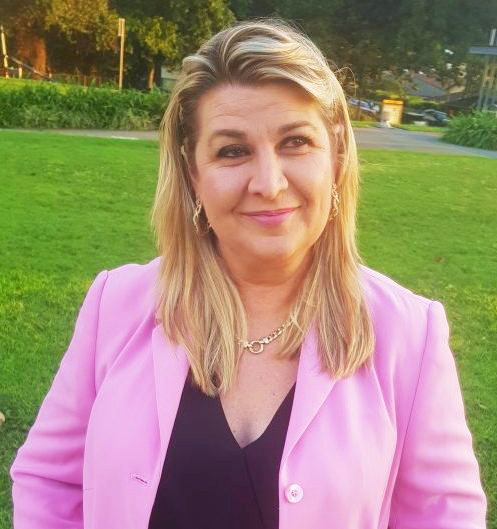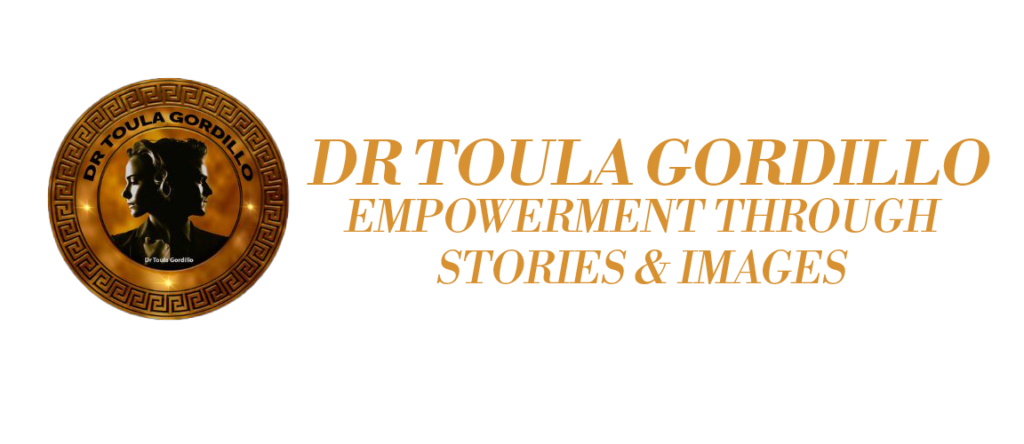ABOUT

Therapies and interventions that are ‘evidence-based, ancient and narrative’ With degrees in clinical psychology, arts and education, as well as further study in Jungian psychotherapy
Dr Toula has worked in private practice, schools and corporate business for more than thirty years. She regularly delivers important social, psychological and historical information using interventions and therapies that are “fantastic”, evidence-based, ancient and narrative.
She particularly loves to use allegory: a story, picture or poem that contains hidden meanings and messages. She uses stories and images to help people to know themselves better, to work through unconscious issues and to identify hidden blockages for business success, wholeness and healing.
Dr Toula is published in books, magazines and academic journals including: Youth Voice Journal, Viewpoint, The Artifice, Immanence—Journal of Applied Myth, Story & Folklore, Feather Knight Books and Cambridge Scholars Press.
She is a member of The CG Jung Society of Queensland, The International Depth Psychology Alliance, The International Association of Jungian Studies (IAJS), The Australian Society of Authors and The Queensland Writer’s Centre.
Dr Toula is an international guest speaker and has presented cyber-safety stories and images at Wakatipu State High School, New Zealand; and myth-based stories and images for positive mental health at Cambridge College, India. Dr Toula has additionally presented at numerous university and private conferences, business organisations and institutions in Australia.
Dr Toula is the creator and custodian of Story Image Therapy (SIT)® and SIT Shadow Work™. She uses various Story Image Therapy tools in her teaching and counselling to help improve ALL people’s physical, mental, emotional and psychospiritual health.
Dr Toula’s Philosophy
When Dr Toula’s children were young, and facing important life issues, the usual parental advice didn’t seem enough. “Young people don’t want lectures,” she observed, “they’re too busy asserting their independence and ability.” The counsellor in her sought how she could do things differently with her children. She reflected upon her past and experience.
Dr Toula grew up with a father who was a “master at storytelling with songs and poetry.” She attended Katherine State High School in the Northern Territory and her mother was responsible for introducing traineeships to the Territory’s First Nation’s youth.
Whilst still in high school, Dr Toula also worked as a domestic on Killarney cattle station with staff from different cultures and backgrounds. As an adult, she has taught and counselled individuals in medical settings and schools, including International schools. It occurred to her that all cultures, in every age, have handed down important life lessons via stories and images.
“This has been a consistent activity since men and women began telling stories by drawing images on cave walls,” she says. “In most cases, they were fantastic allegories about life, the natural world, and our place in it. These stories and images are universal: they cut across age, time, gender and cultural group; in fact all social classes and divisions.”
And today?
Little has changed. Contemporary youth, and the adults who care for them, continue to love mythic stories, and the accompanying images that depict the classic ‘hero’s journey’. In fact, the more fantastic the stories and images, Dr Toula has observed, the more people generally seem to like them.
“To see how much youth and their adult caregivers still love the mythic/heroic genre,” she says, “one only has to look at the enduring popularity of mythology-based heroic books, video games and movies.”
Dr Toula cites examples such as: Rowling’s Harry Potter series, Riordan’s Percy Jackson, Pullman’s His Dark Materials and others.

“Old world charm has provided the inspiration for many of the most popular classic and contemporary tales. It has also, indirectly, helped generations of people to charter their way through some of life’s challenges,” she explains.
“It does this by allowing them to experiment with new ways of living in the real world, by exploring different personas in the world of fantasy. That is, within the relative safety of their own imaginations. This is true of all of us, not just young people.”
"Dr Toula's Story"
Over twelve years ago, Dr Toula’s children (then aged 12, 10 and 9) were struggling with some issues. While on a family camping holiday, she wrote stories about the problems they were facing, but one step removed.
She had a character experience a similar situation as her child, but guided by a (Jungian) wise-sage character. As her children read about the characters and discussed them with her, Dr Toula hoped her children would learn the characters’ positive ways of coping.

To reinforce the stories’ key messages, Dr Toula created accompanying images, scribbled on a piece of paper or drawn with a stick around the campfire.
Future stories and images contained elements from myth and legend that her children could relate to: talking animals, dragons, vampires and paladins, the natural world and symbols that surrounded them.
The development of SIT tools
Dr Toula’s children said they found the stories and images helpful. To help them learn other important life-skills, she continued writing stories. She wrote twelve stories in total and self-published them for use in schools and medical centres.
Employing what she now calls her ‘Jungian Action Research’ method, Dr Toula began using these tools with her students and clients. Through a cyclical pattern of creation, reflection, collaboration, and further reflection, she created more SIT tools. Again, she received excellent feedback and results… and Story Image Therapy (SIT®) was born.
At the same time, Dr Toula conducted PhD psychology research investigating ways technology can help youth to become more resilient. One of the key messages from her qualitative research was that young people use stories and images (online and offline) to cope with their problems. In fact, 79% of the respondents’ described using stories and images as their main coping method, and most viewed or read mythic fantasy or science fiction.
Continuing her quest to improve youth resilience, she then used her PhD qualitative research results as the foundation for a Doctor of Creative Arts research degree, specialing in creative writing. At that time, she was unaware that this action was her unconscious attempt to improve her own youth resilience by researching ways of healing unresolved psychological ‘wounds’ from her teenage years. Over time, and upon reflection during what she now calls her adolescent SIT Shadow Work™, Dr Toula came to realise how and why adolescent issues were still significantly affecting her as an adult. She was, in fact, working on negative adolescent complexes that ‘lived’ in her shadow as an adult (according to Jung’s psychology).

Dr Toula continued researching creative ways in which universally applicable myth-based stories could be written to deliver helpful psychospiritual and philosophical messages to young adult readers. After much personal introspection, again as an adult, she realised that writing her SIT tool (now published as Shadows of Sylvaheim book, ebook and audiobook) was yet another attempt to heal her psychological wounds from adolescence. Dr Toula’s journey, and how she now helps others to heal their own adolescent complexes through Story Image Therapy, has become the subject of her second book, The Rise of Jung in Me.
An Article of an interview with Michelle R Price for Rebirth Magazine
Australia in October 2021

